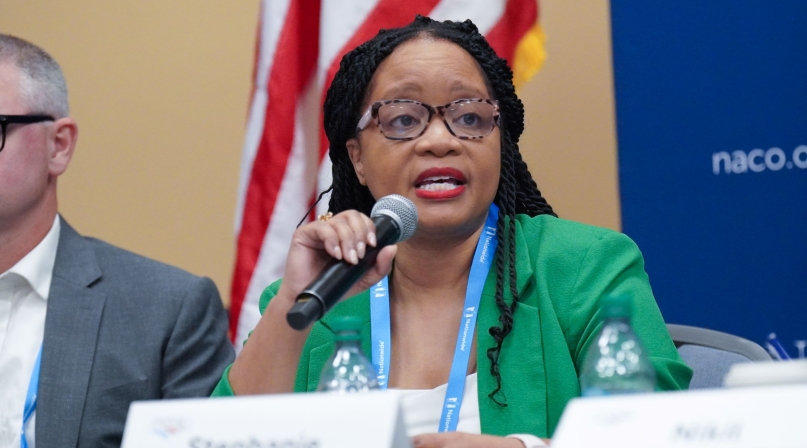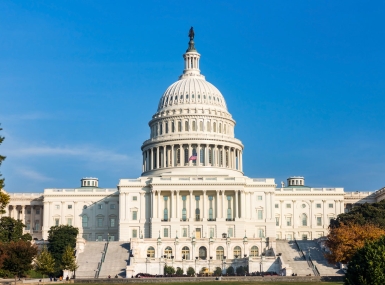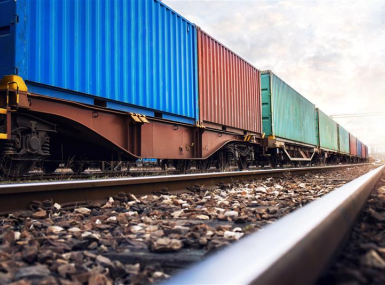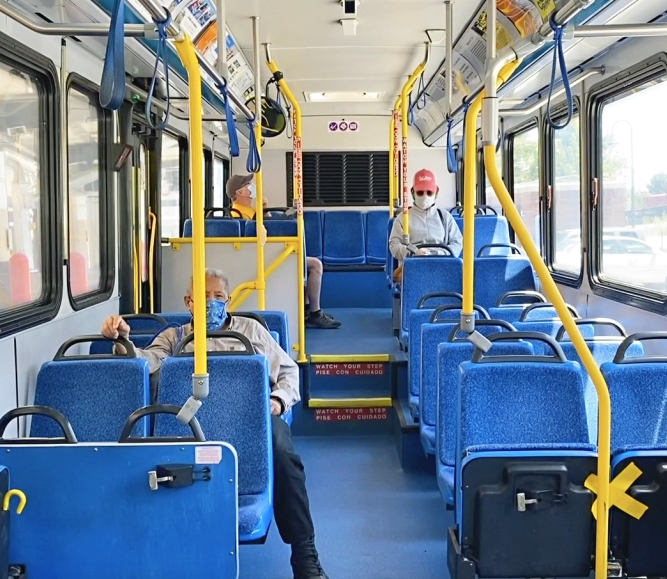LUCC members discuss importance of urban transit

Key Takeaways
Following low ridership during and after the COVID-19 pandemic, investing in urban county transit systems is essential, now more than ever, to cultivate thriving communities, according to panelists at a July 12 Large Urban County Caucus business meeting at NACo’s Annual Conference.
“In our leadership capacities, the transit services we provide and the policies that we establish play a critical role in safely and efficiently connecting residents and visitors to jobs, educational facilities, medical appointments, services and recreational opportunities,” said Los Angeles County, Calif. Supervisor Kathryn Barger. “Our transit services often serve as a lifeline for our constituents who actually need it the most.”
While transit use dipped across the country during the COVID-19 pandemic, studies show that people want more access, according to Gregory Krykewycz, Delaware Valley Regional Planning Commission’s director of transportation planning.
“There’s a lot more demand, regardless of which mode of transit you’re talking about, there’s more demand for off-peak ridership, weekend ridership, night ridership,” Krykewycz said. “So, people tend to be using the service that’s available for other [purposes] than commuting to work, which is a great thing. That means that transit is sort of like a lifestyle mode of access for people. It’s not just about getting to jobs. And that’s a great foundation to build on looking ahead.”
Los Angeles County established a local sales tax to help fund increased investments into its transit system, as it prepares to host the FIFA World Cup in 2026 and the Summer Olympics in 2028, which will attract millions to the county, said Stephanie Wiggins, Los Angeles County Metropolitan Transportation Authority’s chief executive officer.
“The ability to use a local dedicated revenue source, approved by the voters, is really important because it serves as a down payment,” Wiggins said. “And it’s very helpful to be able to say to our state legislature and the federal government that locally, we believe in these investments. As these global events make themselves available for our region, it’s an incredible opportunity to start shifting the perception of transit and the role transit plays.”
The transportation authority partnered with its school system to create the Go-Pass program, which offers free rides to students at participating schools, from kindergarten through 12th grade into community college. As a result, more students are riding the transit system than before the pandemic. There are also more leisure trips, with more people riding transit on the weekends than they did before the pandemic, she noted.
“People want to connect again,” Wiggins said. “Museums, community events, parades, sporting events, cultural events — that’s what’s bringing the ridership back as we continue to expand the system, because of our investment, our local sales tax initiative.”
The Southeastern Pennsylvania Transportation Authority supports five counties in the Greater Philadelphia area and is currently facing budget changes that would cut its overall transit service by 45% by July 2026.
Pennsylvania State Sen. Nikil Saval told county officials that’s it’s important to invest in and maintain transit. States must be proactive in allowing local governments to craft strategies to raise capital and operating costs, Saval noted. Flexibility in local choice is essential, as local governments in Pennsylvania don’t have that authority, even if residents voted for it, to raise their own funds for transit improvements, Krykewycz added.
“We need stable, long-term funding from our Commonwealth,” Saval said. “And we need to make it possible for counties and municipalities to raise their own revenues for their systems. We need to fund transit at a level that both sustains it and encourages it to grow and adapt.”
With a widespread move toward a more hybrid work schedule after the pandemic, commuter rail has dropped the most in ridership, Krykewycz said. Local governments need to utilize their transit data and get creative — if there’s an urban transit location that primarily serves commuters coming in from the suburbs, it’s better to repurpose space like empty parking lots into something that can better serve that community’s needs, he added.
“Commuter rail is the most stressed, but I would also say it’s the biggest opportunity,” he said. “Because all of those urban parking lots that are not as occupied as they used to be, that’s land that’s available for smart infill development, for housing, for everything else, and that’s infrastructure that regions can leverage better than we did in the past.”
Related News

U.S. House of Representatives passes SPEED Act and other permitting reform bills
On December 18, the U.S. House of Representatives passed the SPEED Act (H.R. 4776). The SPEED Act would strengthen county involvement in decision-making and make needed commonsense reforms to the federal environmental review process.

Counties and Railroads: Shared Priorities for the Next Surface Transportation Bill
County leaders from across the country have a vital opportunity to ensure their infrastructure priorities are front and center.

House lawmakers introduce bipartisan legislation to support World Cup local transportation needs
On December 2, U.S. Reps. Rick Larsen (D-Wash.-02) and Burgess Owens (R-Utah-04) introduced the Transportation Assistance for Olympic and World Cup Cities Act (H.R.6348), a bipartisan effort to strengthen local transportation systems in communities preparing to host major international sporting events
County News
Pandemic fundamentally alters transit systems

